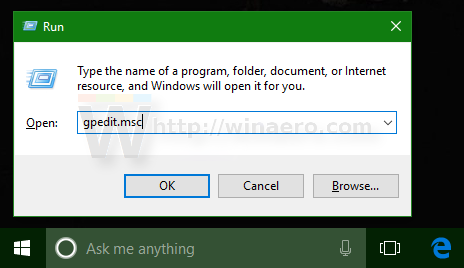User Account Control, or just UAC is a part of the Windows security system which prevents apps from making unwanted changes on your PC. By default, the UAC prompt shows administrative accounts which can be selected by standard users to elevate a program. For extra security, you can hide administrative accounts from that dialog, so standard users have to additionally enter valid credentials for a local administrator account including a user name and password.
Advertisеment
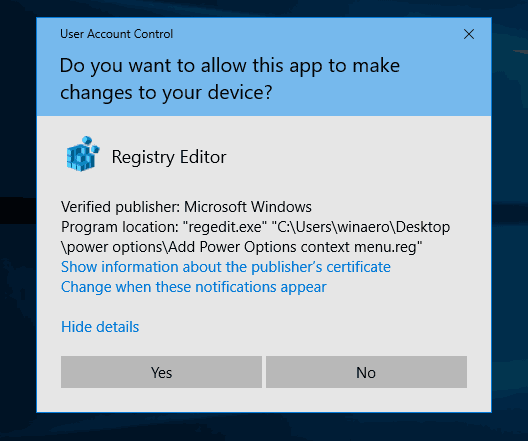
The UAC comes with different security levels. When its options are set to Always notify or Default, your Desktop will be dimmed. The session will be temporary switched to the secure Desktop without open windows and icons, containing only an elevation prompt by the User Account Control (UAC).
Members of the Administrators user group have to confirm or reject the UAC prompt without providing extra credentials (UAC consent prompt). Users without administrative privileges have to additionally enter valid credentials for a local administrator account (UAC credential prompt).
There is a special security policy in Windows 10 that allows hiding the available local administrative accounts from a UAC prompt.
A UAC prompt for a standard user account with its default options looks as follows.
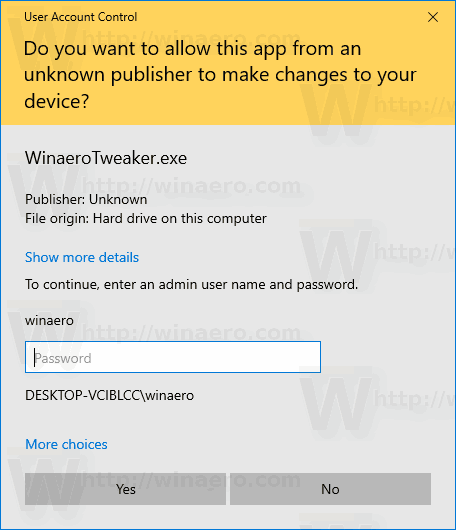
Here's how it looks when an administrative account is hidden.
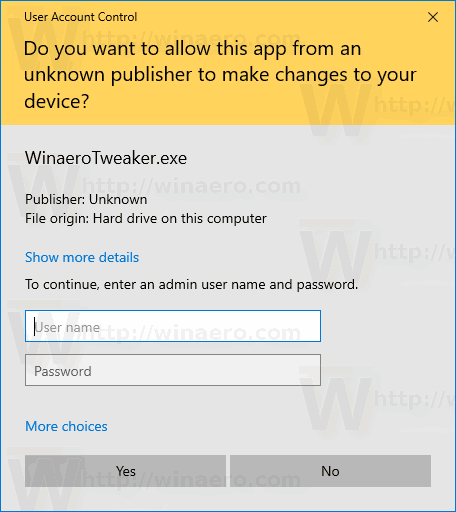
If you are running Windows 10 Pro, Enterprise, or Education edition, you can use the Local Group Policy Editor app to enable it. All editions of Windows 10 can use a Registry tweak mentioned below.
To Hide Administrator Account From UAC Prompt in Windows 10,
- Press Win + R keys together on your keyboard and type:
gpedit.msc
- Group Policy Editor will open. Go to Computer Configuration\Administrative Templates\Windows Components\Credential User Interface.
- Double-click on the policy option Enumerate administrator accounts on elevation.
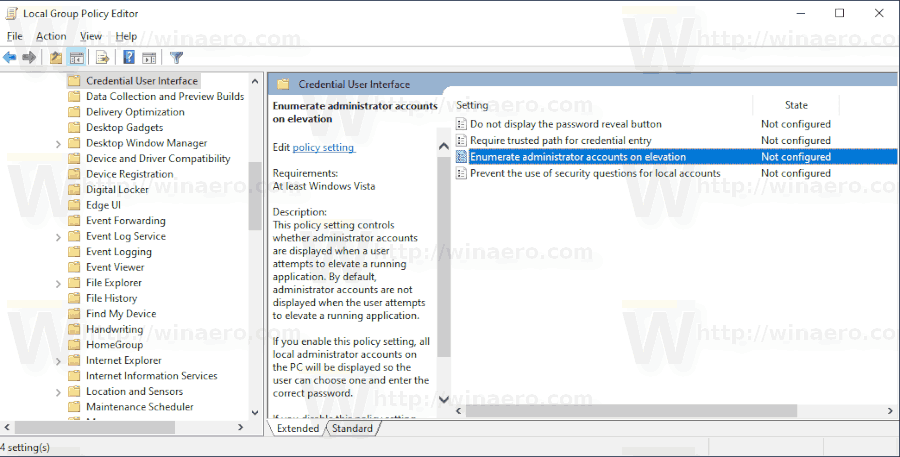
- Set it to Disabled.
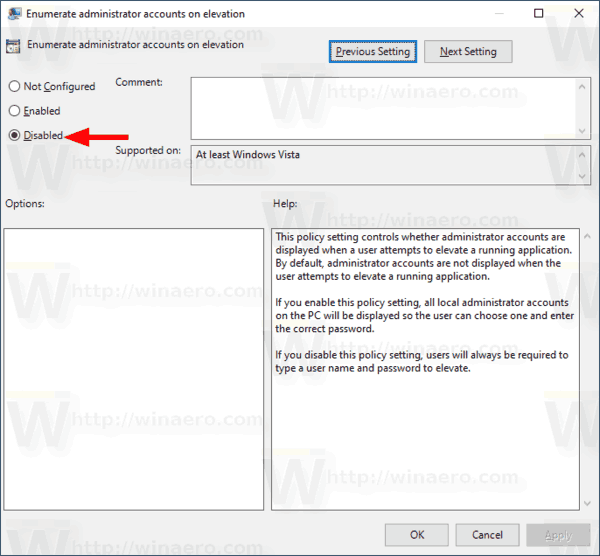
If your Windows edition doesn't include the gpedit.msc tool, you can apply a Registry tweak as described below.
Hide Administrator Account from UAC Prompt with Registry Tweak
- Open Registry Editor.
- Go to the following Registry key:
HKEY_LOCAL_MACHINE\SOFTWARE\Microsoft\Windows\CurrentVersion\Policies\CredUI
Tip: See how to jump to the desired Registry key with one click.
If you do not have such a key, then just create it.
- Here, modify or create a new 32-bit DWORD value EnumerateAdministrators. Note: Even if you are running 64-bit Windows you must still create a 32-bit DWORD value. Leave its value data as 0 to enable the feature.
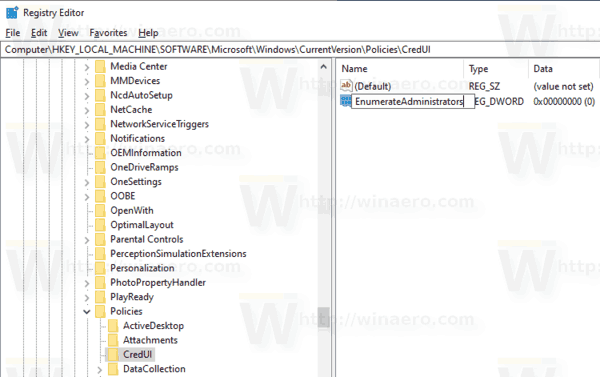
- A value data 1 will force disable it. By default, the value doesn't exist in the Registry.
- Restart Windows 10.
To save your time, you can download the following ready-to-use Registry files.
The undo tweak is included.
That's.
Related articles:
- Enable CTRL+ALT+Delete Prompt for UAC in Windows 10
- Create elevated shortcut to skip UAC prompt in Windows 10
- How to change UAC settings in Windows 10
- Fix Yes button disabled in UAC dialogs in Windows 10, Windows 8 and Windows 7
- How to turn off and disable UAC in Windows 10
Support us
Winaero greatly relies on your support. You can help the site keep bringing you interesting and useful content and software by using these options:
If you like this article, please share it using the buttons below. It won't take a lot from you, but it will help us grow. Thanks for your support!
Advertisеment
